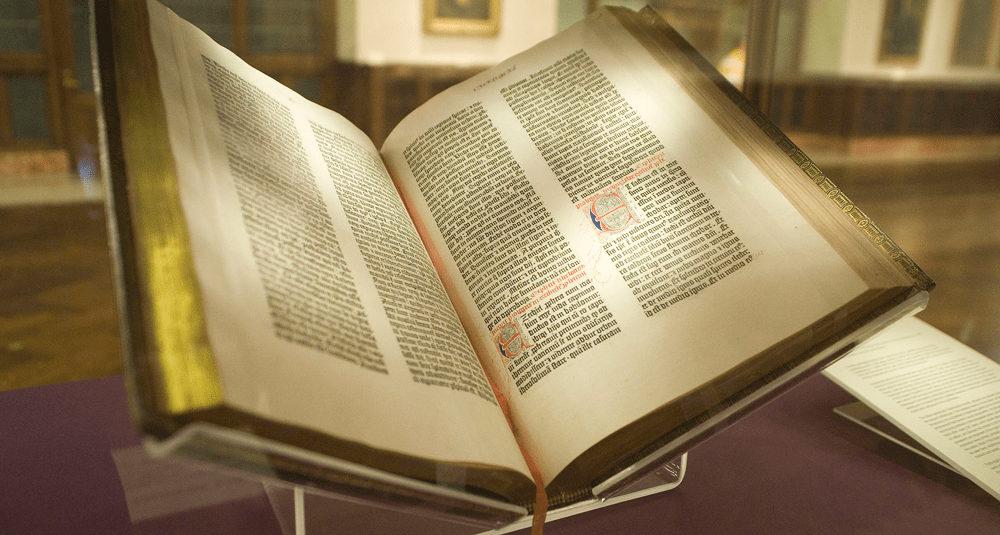When was the Gutenberg Bible printed?
Last Updated:
The Gutenberg Bible, also known as the 42-line Bible, is considered the first book printed in Europe using movable metal type. It marks the beginning of the printing revolution and an essential milestone in the history of communication, culture and the dissemination of knowledge. It was completed around 1455 in Mainz, Germany, by Johannes Gutenberg, the inventor of modern typography.
Before Gutenberg’s invention, books were copied by hand by copyist monks, or produced in very small numbers by xylography (wood engraving). This process was time-consuming, costly and prone to errors. Gutenberg’s invention of movable type printing in the 1440s completely overturned this practice.
Gutenberg’s most ambitious project was the printing of a complete Bible, in Latin (the Vulgate), in two columns of 42 lines per page. This monumental work comprises over 1280 pages, printed on paper or on vellum, a luxury parchment. An estimated 180 copies were produced, 49 of which are still preserved today, some complete, others fragmentary.
The Gutenberg Bible is famous for several reasons:
- Revolutionary technique: for the first time, an entire book was produced using reusable movable metal type, enabling much faster and more faithful mass reproduction;
- Exceptional quality: far from being a mere prototype, this Bible is a typographic masterpiece. The typefaces are clean and regular, and the layout is inspired by the style of medieval manuscripts, with illuminated letters added by hand after printing;
- Dissemination of knowledge: This innovation made books more accessible, helping to spread humanist ideas, literacy and, later, major movements such as the Protestant Reformation;
- Transition from manuscript to print: the Gutenberg Bible still retains some elements of manuscript book art (such as hand-painted lettering), but ushers in a new era in book production.
Johannes Gutenberg was not originally a professional printer. He was a goldsmith and engineer. His innovation consisted in combining several techniques: the manufacture of metal typefaces, the use of oil-based inks with better adhesion, and above all the printing press inspired by the wine press.
He obtained financing from Johann Fust, a wealthy banker, but relations between the two men deteriorated. In 1455, following a lawsuit, Gutenberg lost control of his workshop, but his name remains forever associated with this first printed Bible.
Today, the Gutenberg Bible is one of the rarest and most valuable books in the world. Complete copies can be found in major libraries such as the Library of Congress in Washington, the British Library in London and the Bibliothèque nationale de France in Paris. When a copy or fragment appears on the market, it fetches prices of several million euros.
The Gutenberg Bible was printed around 1455 in Mainz by Johannes Gutenberg. The first work to be produced using movable type, it marked the beginning of a new era in the transmission of knowledge and the spread of written culture in Europe. More than a book, it is a symbol of the transition from the Middle Ages to modernity.
history

When was the Gutenberg Bible printed?
Answer
The Gutenberg Bible, the first book printed using movable type, was completed around 1455 in Mainz, Germany, by Johannes Gutenberg.